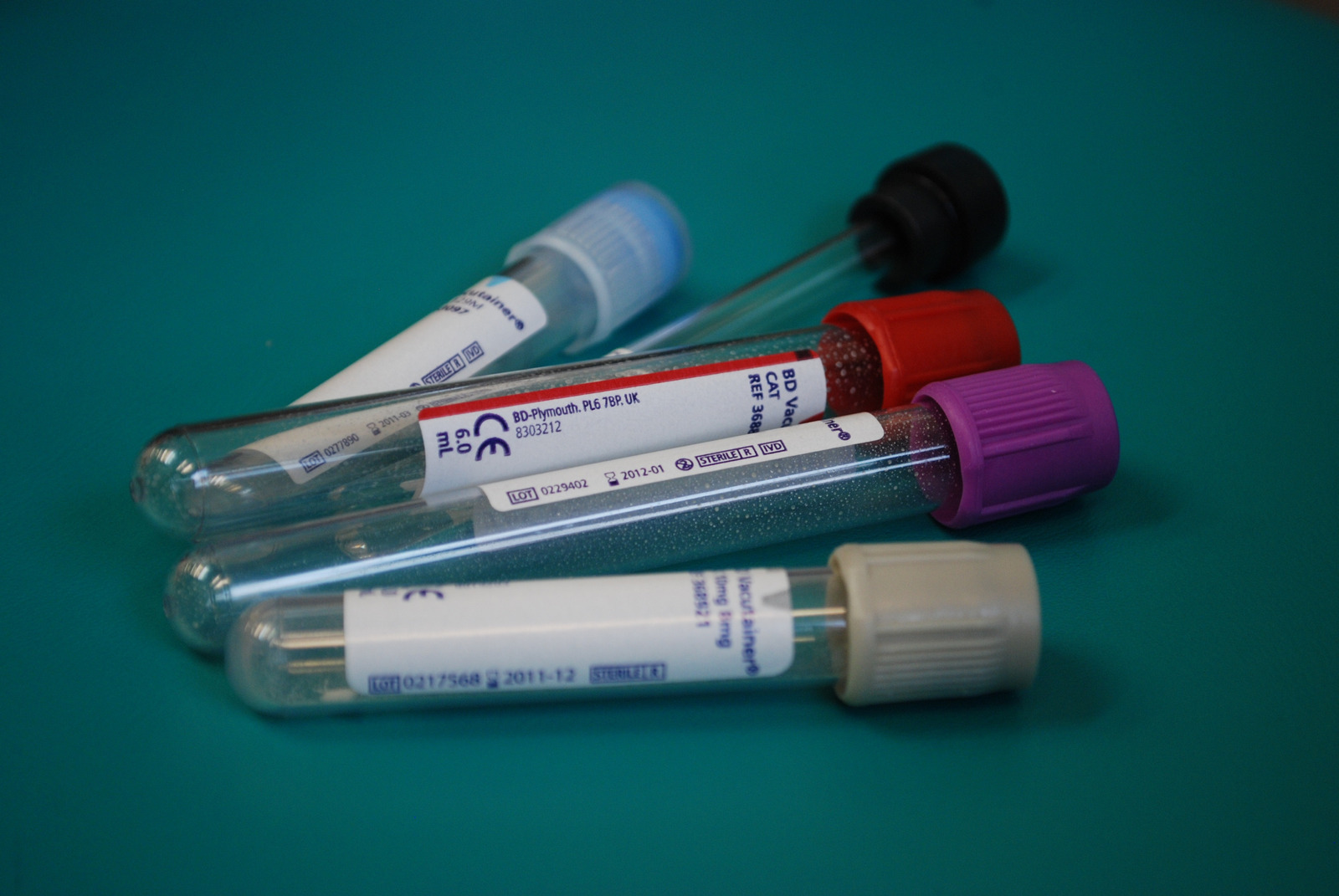BIOTOXIN BLOOD TEST FOR MOLD EXPOSURE LLife Extension Foundation offers this test at a discount from retail if you purchase a year membership (check with Life Extension for information on membership) which offers a large savings off the regular price of the panel. The other advantage of this test is that patients do not need their doctor to order this panel, they can in fact order it themselves. In my experience many patients are having difficulty getting doctors to order any of this type of testing because they do not know how to interpret the results and they don't know how to treat patients exposed to toxic mold. If you can find a doctor to order the panel for you that would be best, but let's face it, as far as mold illness is concerned there is a doctor shortage. Too many times I speak with people who cannot find a doctor near them and cannot afford to travel to a doctor that treats for mold illness. Also, many insurances will not completely pay for these tests, in fact sometimes they will not pay at all. Or if you have to meet a high deductible, this discounted panel would help save money. WHAT IS BIOTOXIN ILLNESS? The Biotoxin Mold Illness Panel is designed to look at the chronic inflammatory response set in motion when a person is exposed to toxic mold. Biotoxic illness refers to the cause of a person’s illness. All biotoxic illnesses have one common denominator…toxins produced by living things. Mold, lymes and ciguatera (fish poisoning) are the most commonly encountered sources of biotoxins in our environment. Mold spores contain mycotoxins which are biotoxins. The organism that causes lymes produces biotoxins. Fish that feed on toxic algae accumulate biotoxins called ciguatera toxins. Once you rule biotoxin exposure in with this blood test panel, then you can do a mycotoxin urine test to rule in or out mold as the cause. The tests contained in this panel look at the complex cascade of events throughout multiple inflammatory pathways produced by biotoxic mold exposure. Let's take a look: Stage 1: The Biotoxic Effect You are exposed to biotoxic mold and your immune system does not respond appropriately to remove the foreign invader. Stage 2: Cytokine Effects Cytokines are cell signaling molecules that aid in communication during immune responses and stimulate the movement of cells toward sites of inflammation. Symptoms in this stage might include– headaches muscle aches, flu-like symptoms, fatigue, unstable temperature and difficulty concentrating. Tests included for stage two include: Matrix Metalloproteinase-9 (MMP9) Tumor Necrosis Factor alpha (TNFα) Stage 3:Reduced VEGF Reduction in VEGF may lead to fatigue, muscle cramps and shortness of breath. Vascular Endothelial Growth Factor (VEGF) Stage 4: Immune Effects This stage triggers autoimmunity and activation of the complement pathway. Complement C4a is an inflammatory marker of great significance. Since these short lived products are re-manufactured rapidly, an initial rise can be seen in the blood within 12 hours of exposure to biotoxins. Levels remain elevated until effective therapy is initiated. Complement C4a Stage 5:Low MSH MSH is a potent anti-inflammatory compound. Reduced MSH is at the heart of the “Biotoxic pathway” with many negative downstream effects. VIP plays a similar role to MSH in regulating inflammatory response. Symptoms may include sleep disturbances, chronic pain, leaky gut syndrome, shortness of breath during exercise, hormone abnormalities and mood swings. Melanocyte-Stimulating hormone (MSH) Vasoactive Intestinal Polypeptide (VIP) Stage 6:Antibiotic Resistant Staph bacteria People exposed to biotoxins frequently come down with staph colonization, caused by biofilm-forming microorganisms that live deep in the nose without causing nasal symptoms. This step would require a nasal culture to be performed by your doctor and is not included in the panel. Stage 7:Pituitary hormone effects Symptoms may include frequent thirst, susceptibility to shocks from static electricity, lower production of sex hormones loss of libido, and abnormal cortisol production. This panel looks at the following test for stage 7 effects. Antidiuretic Hormone (ADH) |
BIOTOXIN MOLD ILLNESS PANEL BIOTOXIC MOLD ILLNESS PANEL (BLOOD TEST) AT LIFE EXTENSION FOUNDATION THAT DOES NOT REQUIRE YOUR DOCTOR TO ORDER. This panel includes the most important blood tests for evaluation of toxic mold exposure. After purchasing, you will get a requisition for blood testing to be drawn at your local lab. The test includes: Fasting is not required INTERPRETATION OF BIOTOXIN MOLD ILLNESS PANEL BLOOD TEST RESULTSSome of these tests are additional tests that are not included in the Biotoxin Mold Illness Panel, but can be ordered by your doctor. C4a has been unavailable for a few years. VIP - Vasoactive Intestinal Polypeptide Normal Range: 23-63 pg/mL Vasoactive intestinal polypeptide (VIP) is a neuroregulatory hormone with receptors in the hypothalamus. This hormone/cytokine regulates peripheral cytokine responses, pulmonary artery pressures, and inflammatory responses throughout the body. Low VIP levels are present in mold illness patients. This leads to unusual shortness of breath, especially in exercise. To date, every multiple chemical sensitivity patient Shoemaker has seen (over 500) have had low VIP. VIP plays a role similar to MSH in regulating inflammatory responses. With respect to the digestive system, VIP seems to induce smooth muscle relaxation (lower esophageal sphincter, stomach, gallbladder), stimulate secretion of water into pancreatic juice and bile, and cause inhibition of gastric acid secretion and absorption from the intestinal lumen, which can lead to chronic, watery diarrhea. VIP replacement, when used according to a strictly administered protocol, has proven to be fabulously effective in returning chronically fatigued patients back to a normal life. Do not use VIP if you are exposed to mold (with ERMI values greater than 2); if you fail a VCS test; or if you have a MARCoNS present in your nose. MSH - Melanocyte Stimulating Hormone Normal Range: 35-81 pg/mL Alpha melanocyte stimulating hormone (MSH) has multiple anti-inflammatory and neurohormonal regulatory functions, exerting regulatory control on peripheral cytokine release, as well as on both anterior and posterior pituitary function. TGF Beta-1 - Transforming Growth Factor Beta-1 Normal Range: <2380 pg/ml TGF Beta-1 is a protein that has important regulatory effects throughout innate immune pathways. This protein helps control the growth and division (proliferation) of cells, the process by which cells mature to carry out specific functions (differentiation), cell movement (motility), and the self-destruction of cells (apoptosis). The TGF Beta-1 protein is found throughout the body and plays a role in development before birth, the formation of blood vessels, the regulation of muscle tissue and body fat development, wound healing, and immune system function (especially regulatory T-cells). TGF Beta-1 can impair T-regulatory cell function, which in turn contributes to the activation of autoimmunity, yet TGF Beta-1 also plays a role in suppressing autoimmunity(!). TGF Beta-1 has become important in the exploding incidences of childhood asthma, raising the tantalizing issue of remodeling due to biotoxin exposure. The EPA says that 21% of all new cases of asthma are due to exposure to Water Damaged Buildings. If an individual develops wheezing after exposure to a water damaged building, look for remodeling to be the cause. Remodeling means "something" happens that the airway changes to be more reactive and in need of medications to reduce wheezing. Neurologic, autoimmune and many other systemmic problems also are found with high TGF Beta-1.
C4a Normal Range: 0-2830 ng/ml C4a has become the inflammatory marker of greatest significance looking at innate immune responses in those with exposure to Water Damaged Buildings (WDB). The complement system is a group of proteins that move freely through your bloodstream. The proteins work with your immune system and play a role in the development of inflammation. Each complement activates inflammatory responses, with spillover of effect from the innate immune response to acquired immune response and hematologic parameters. These short-lived products are re-manufactured rapidly, such that an initial rise of plasma levels is seen within 12 hours of exposure to biotoxins, and sustained elevation is seen until definitive therapy is initiated.
Lab Tests for Mold Illness - Secrets of Survival The laboratory tests that are ordered are blood tests done in labs around the world, and paid for by insurance companies. These tests hold the secrets of surviving mold illness. The names may be foreign to you, but since they are the things that hold the secrets to Surviving Mold, meet them today and perhaps know them as friends tomorrow. You don't need to be an expert to read further, but you should not turn away from learning more. Take the time to learn the language of mold illness and this site will try to make things as understandable as possible. No one says learning is easy, but that doesn't mean you can skip the learning process when it's your illness. Knowledge is power. HLA DR - Your Genes Human Leukocyte Antigens (HLAs), are found on the surface of nearly every cell in the human body. They help the immune system tell the difference between body tissue and foreign substances. The immune response genes are found on chromosome six. Patients could have two alleles, copies of genes (for each gene, one allele is inherited from a person's father, and the other is inherited from a person's mother), out of approximately 10 possible, as part of their genotype. Based on Dr. Shoemaker's data, in normal populations compared to international registries of gene frequencies of HLA DR, we know the frequency of mold illness-susceptible patients approximates 24% of the normally distributed population. Almost a quarter of the normal population is genetically susceptible to chronic mold illness. Three quarters isn't. DRB1 DQ DRB3 DRB4 DRB5 Multisusceptible 4 3 53 11/12 3 52B 14 5 53B Mold Susceptible 7 2/3 53 13 6 52A, B, C 17 2 52A 18* 4 52A Borrelia, post Lyme Syndrome 15 6 51 16 5 51 Dinoflagellates 4 7/8 53 Multiple Antibiotic Resistant Staph Epidermis (MARCoNS) 11 7 52B No recognized significance 8 3, 4, 6 Low-risk Mold 7 9 53 12 7 52B 9 9 53 AGA IgA/IgG Normal Range: 0-19 Antigliadin (AGA) antibodies are produced in response to gliadin, a small protein that is part of gluten, biologically active of wheat, barley and rye. These antibodies were thought at one time to be specific for Celiac Disease. Within 30 minutes of ingestion of gliadin, for those with antigliadin antibodies, there will be an inflammatory response. This inflammatory response can provide many symptoms, including some that mimic attention deficit disorder. We all know that some kids are labeled as having ADHD because of their abnormal behavior seen within 30 minutes of eating a cupcake. It is not the sugar in the icing, it is the gluten in the cake. Antigliadin antibodies are found in over 58% of children with biotoxin-associated illness. ACTH/Cortisol Normal Range: ACTH - 8-37 pg/mL; Cortisol - a.m. 4.3-22.4 / p.m. 3.1-16.7 ug/dL ACTH is a hormone released from the anterior pituitary gland in the brain. Cortisol is a steroid hormone produced by the adrenal cortex, which is the outer part of the adrenal gland. The adrenal glands are located on top of both kidneys.
VEGF Normal Range: 31-86 pg/mL Vascular endothelial growth factor (VEGF) is a substance made by cells that stimulates new blood vessel formation and increases blood flow in the capillary beds. VEGF is a polypeptide. Deficiency of VEGF is quite common and is a serious problem in biotoxin illness patients that must be corrected. If you don’t have blood flow, cells begin starve and don’t work properly. ACLA IgA/IgG/IgM Normal Range: IgA - 0-12; IgG 0-10; IgM 0-9 Anticardiolipins (ACLA) are autoantibodies. Antibodies are proteins in the blood that the body produces to fight off foreign agents. Antibodies do this by creating an immunity against unfamiliar microorganisms. Autoantibodies are antibodies that are directed against one's self. They interfere with the normal function of blood vessels and react with proteins in the blood that are bound to phospholipid, a type of fat molecule that is a part of the normal cell membrane. IgA, IgM, and IgG are autoantibodies often identified in collagen vascular diseases such a lupus and scleroderma, and are often called anti-phospholipids. An increased risk of spontaneous fetal loss in the first trimester of pregnancy is not uncommonly seen in women with the presence of these autoantibodies. They are found in over 33% of children with biotoxin-associated illnesses. ADH/Osmolality Normal Range: ADH - 1.0-13.3 pg/ml; Osmolality - 280-300 mosmol Antidiuretic hormone (ADH), or vasopressin, is a substance produced naturally by the hypothalamus and released by the pituitary gland. The hormone controls the amount of water your body removes. Osmolality is a test that measures the concentration of all chemical particles found in the fluid part of the blood. Symptoms associated with dysregulation of ADH include dehydration, frequent urination, with urine showing low specific gravity; excessive thirst and sensitivity to static electrical shocks; as well as edema and rapid weight gain due to fluid retention during initial correction of ADH deficits. MMP-9 Normal Range: 85-332 ng/mL Matrix metallopeptidase 9 (MMP-9) is an enzyme that in humans, is encoded by the MMP9 gene. Proteins of the MMP9 family are involved in the breakdown of extracellular matrix in normal physiological processes, such as embryonic development, reproduction, and tissue remodeling, as well as in disease processes. It has been implicated in pathogenesis COPD by destruction of lung elastin, in rheumatoid arthritis, astherosclerosis, cardiomyopathy, and abdominal aortic aneurysm. MMP-9 delivers inflammatory elements of of blood into subintimal spaces, where further delivery into solid organs (brain, lung, muscle, peripheral nerve and joint) is initiated. Leptin Normal Range: Male: 0.5-13.8 ng/mL; Female: 1.1-27.5 ng/mL Leptin turns on how tightly the body holds onto fatty acids. When Leptin is high, one holds onto fatty acids and stores them in fat. This leads to rapid weight gain, and because of the high Leptin, standard approches to weight loss like eating less and exercising more will fail. The inflammatory responses that causes Leptin levels to rise lead to patients who are chronically tired, in chronic pain, and forever overweight |
 |
THE ADVICE PROVIDED ON THIS WEBSITE IS INTENDED TO BE USED UNDER THE SUPERVISION OF YOUR PHYSICIAN OR HEALTH CARE PROVIDER.

FOR A FREE CONSULTATION ON MOLD REMEDIATION OR REMOVAL IN YOUR AREA (For FL, CA, NY, NJ, MD, VA, and DC) CALL
1-888-808-6405
